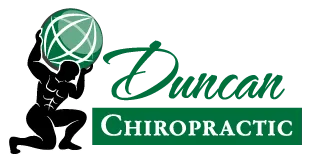
Sciatica can be a seriously painful symptom of certain disorders. Sciatica is a condition in which pain radiates from your lower back down the back of your legs. This occurs due to the sciatic nerve being pinched, often by a herniated disk. It can range from just painful to full out debilitating.
It's not just pain, though. Other symptoms include numbness, tingling sensations, and burning. All these symptoms can also result in weakness and difficulty moving the legs. Getting this ailment looked at, diagnosed, and treated can greatly increase quality of life.
Luckily, a chiropractor can properly treat sciatica to reduce pain. Sciatica is something that many chiropractors regularly treat and feel very comfortable doing so.
There are certain factors in life that increase your chance of sciatica and there are ways to improve your chances of not experiencing it. The risk factors of sciatica are:
- Age- As you get older, your chances of sciatica increase
- Obesity- An increased body weight will increase the stress on your spine
- Occupation- Any occupation that you do heavy lifting for or spend a prolonged period of time sitting increases your risk of sciatica
- Diabetes- This increases your risk of nerve damage, which can then cause sciatica
The best ways to counteract these risk factors are to exercise regularly and sit with proper posture. Both of these will keep your body healthy longer. When exercising, core exercises are what will strengthen the muscles in your abdomen and lower back for proper posture.
The good thing about using chiropractic care to treat sciatica, is that the treatment will involve non-invasive and drug free procedures. There are multiple procedures that a chiropractor can perform to reduce the symptoms of sciatica. Some common procedures used are:
- Ice/Cold Therapy- used to reduce the inflammation and control the pain.
- Ultrasound- ultrasound produces sound waves that create a gentle heat that is able to penetrate soft tissue. This will reduce stiffness, pain, swelling, muscle cramps, and cramping.
- Spinal Adjustments- Spinal adjustments are the defining factor of chiropractic care. When a chiropractor adjusts the spine, it involves realigning vertebrae to their proper positions in the spine and freeing up movement of the spine. Spinal adjustments can help reduce inflammation, muscle spasms, and pain that is caused by irritated nerves.
- Transcutaneous Electrical Nerve Stimulation- TENS involves sending small electrical impulses through the muscle. This reduces pain and muscle spasms caused by sciatica.
Chiropractors are trained to perform these procedures in an effective manner without causing further damage or pain to the patient. Not every chiropractor will perform all of these procedures. Most chiropractors will have a specific way they feel is best at treating sciatica and if that method does not work, they are trained to decide what the best course of action is from there.
Another big goal of your chiropractor will be to prevent the symptoms from returning. While going through treatment, which usually does not take more than 4 to 5 visits depending on the severity of symptoms, your chiropractor will most likely teach you exercises and stretches to perform at home. These are important to follow because they will greatly reduce the chances of your symptoms coming back. These exercises will not be intense, but rather simple techniques that stretch the lower back and legs.
It is important to remember that sciatica itself is a symptom, not a condition. A chiropractor can reduce sciatica effectively but may not be able to actually treat the condition causing the sciatica depending on the actual condition. When you present your symptoms to the chiropractor, it is possible he will refer you to another type of doctor to treat the actual disorder. This does not mean he 100% cannot help ease the symptoms, it just means that there is a larger underlying issue that may require different care.
